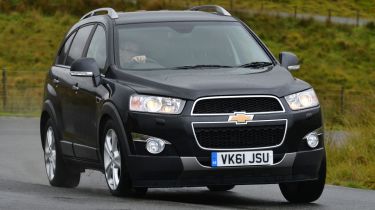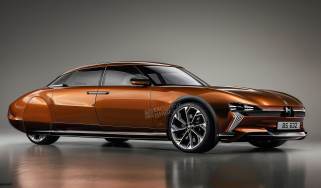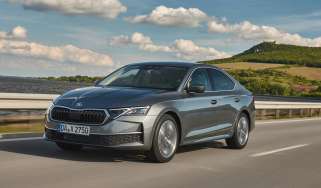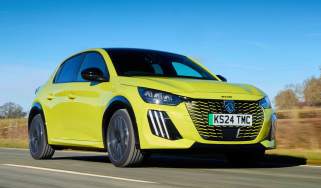Chevrolet Captiva
Space and kit are Chevy’s trump cards
If you really need your SUV to carry seven people, the Captiva has the best rearmost seats in this test. But this, along with the generous spec, doesn’t do enough to justify the high price – especially as quality and refinement lag behind the Santa Fe’s.
On paper, the Chevrolet Captiva and Hyundai Santa Fe are very closely matched. Both are offered with seven seats, have long lists of standard equipment and are powered by torquey 2.2-litre diesels. Plus, they have similar price tags.
In reality, however, the seven-seat Chevrolet struggles to match the Hyundai. For starters, it’s marginally smaller than the Santa Fe. And while a facelift last year gave the Captiva a bold new grille, it’s not exactly pretty, with lots of straight edges and awkward styling details. Even the 19-inch alloy wheels, silver accents and deep front spoiler of the top-spec LTZ model in our test can’t rescue the looks.
Inside, the differences between the two are even more stark. The leather covering the steering wheel looks shiny and feels cheap, while the hard plastics used on the centre console are a world away from the soft-touch materials in the Hyundai. The standard touchscreen sat-nav has a clunky colour display, too, while the harsh blue digital display for the radio looks even more old-fashioned than the XC90’s.
More reviews
Leather seats come as standard, but they don’t have the premium feel of the Santa Fe’s, while the middle row doesn’t slide back and forth, unlike the Hyundai’s.
However, where the Captiva has a surprising advantage is in the two rearmost seats. It’s the smallest car here, but clever packaging means there’s more space inside. The fixed middle row unlatches from the floor and tilts forward to give much wider access to the back. And once you’re there, there’s more space than in either rival. Even adults can get comfortable inside, as there’s lots of kneeroom, and your head is nowhere near the rooflining, unlike in the Santa Fe.
And the practicality doesn’t end there. Boot space isn’t far behind the Hyundai’s, while the tailgate glass opens independently, so you can drop small items in without having to go to the trouble of opening the boot fully.
On the road, the Captiva has a sporty feel, thanks to its low-profile tyres. But it doesn’t offer much grip, the steering is vague and the suspension fidgets and jolts over every bump in the surface. It’s not as comfortable as the Santa Fe, let alone the XC90. In addition, that low front apron severely limits the Chevy’s ground clearance when heading off road.
But the Captiva’s biggest problem is its price tag. The auto we tested costs £32,365, while the manual is still nearly £1,000 more than the Santa Fe. And if £30k feels like a lot for a Hyundai, it makes even less sense to shell out yet more on a Chevy – especially considering the Captiva’s weak residuals.



